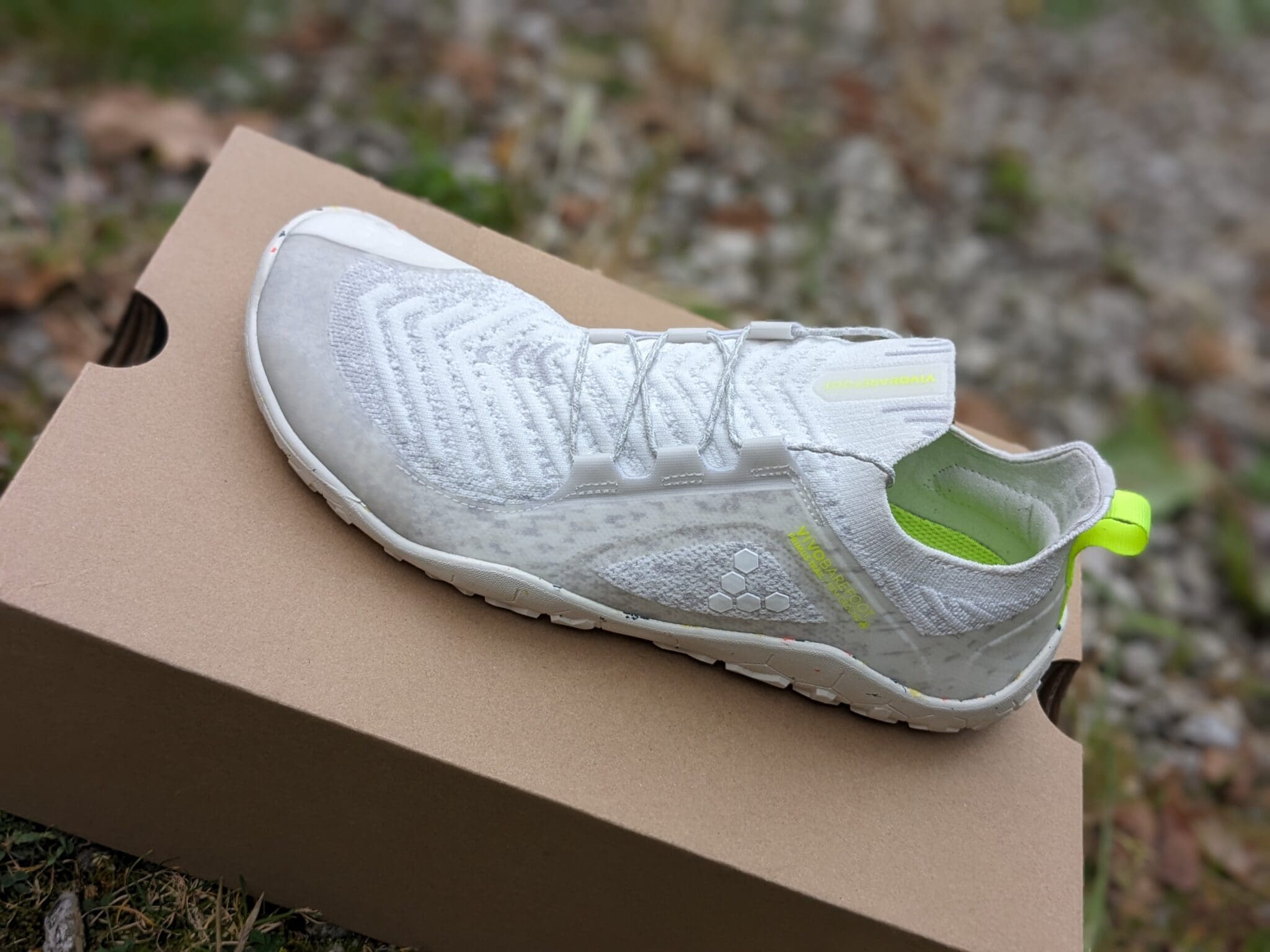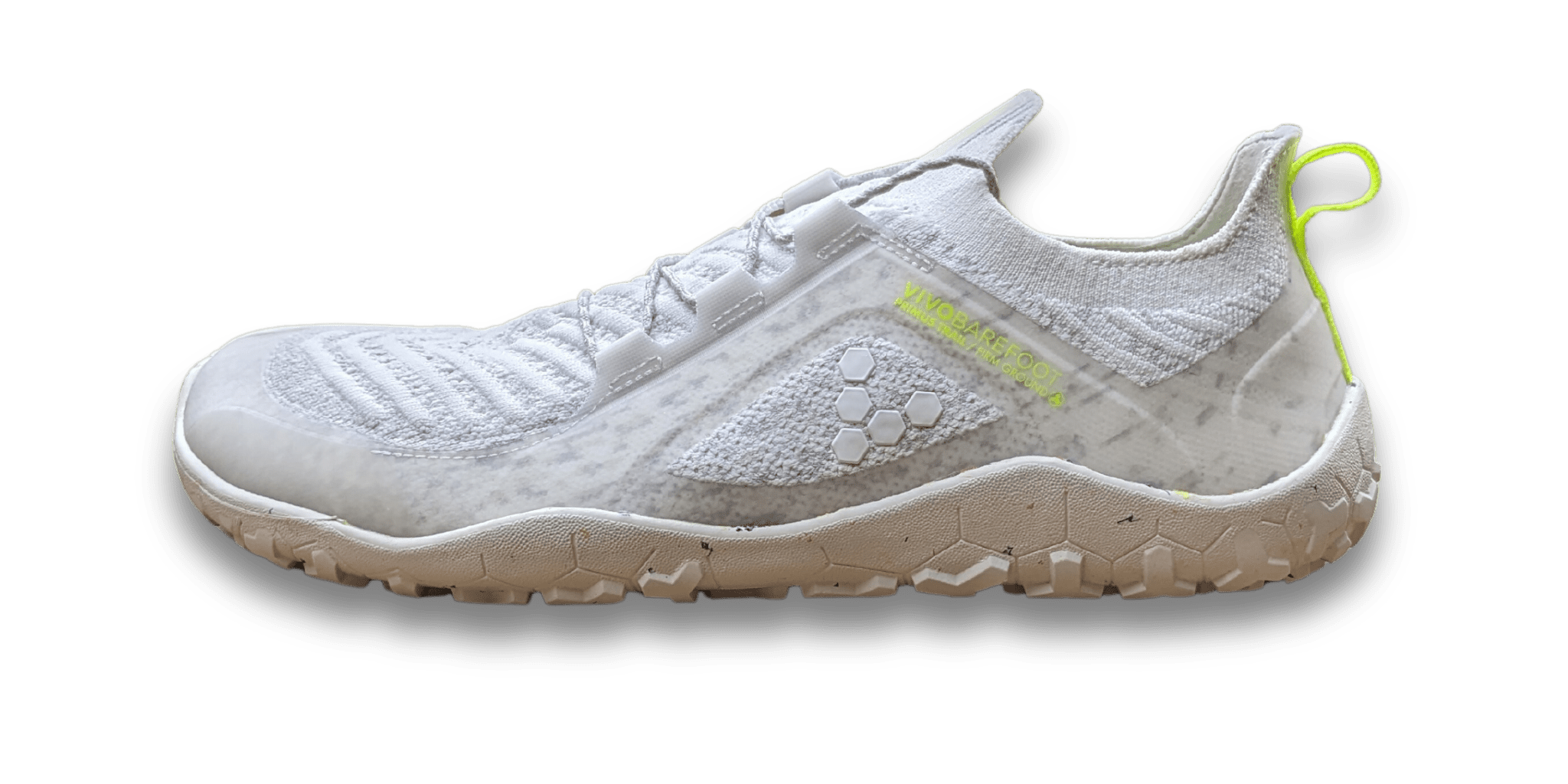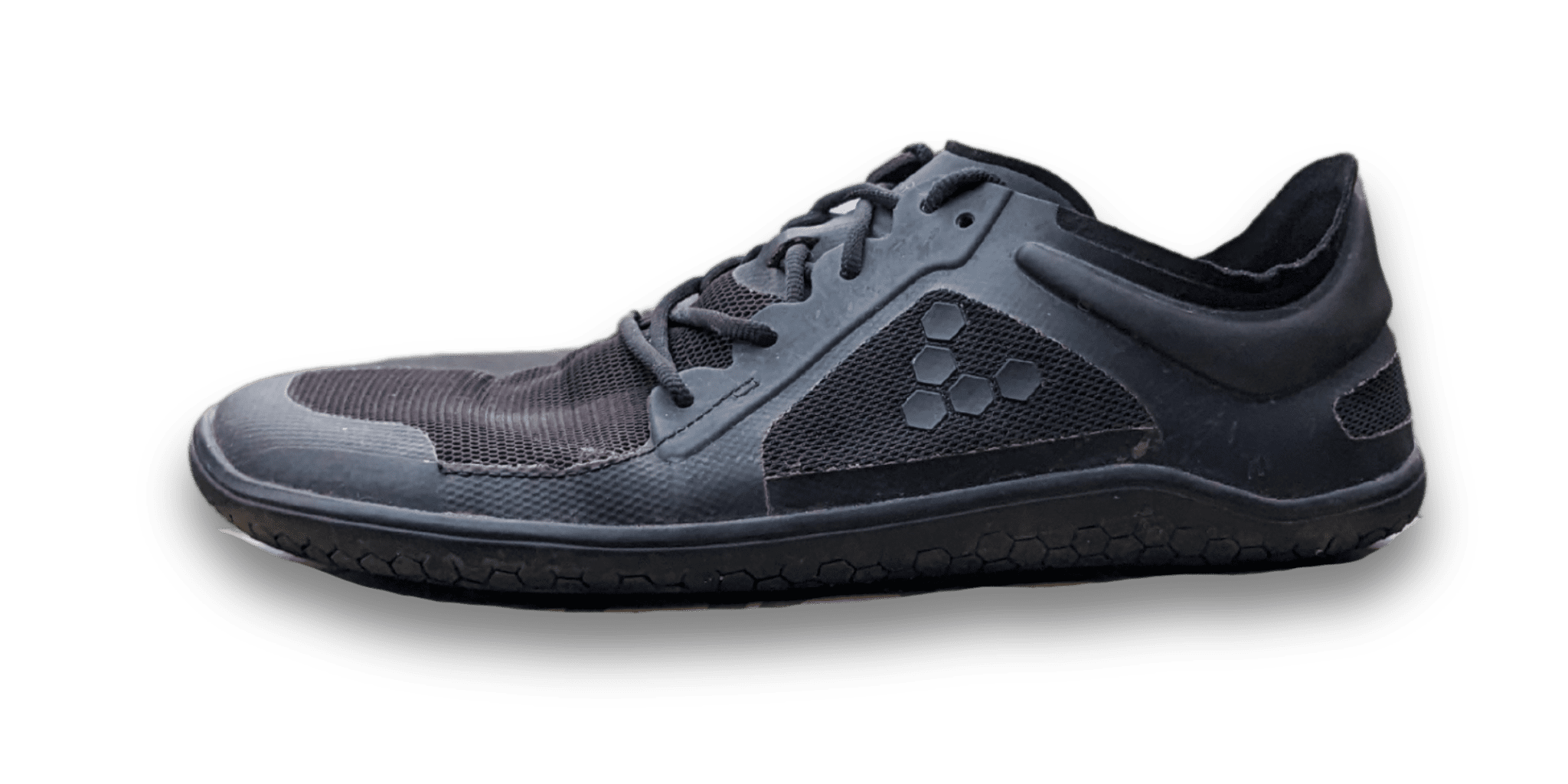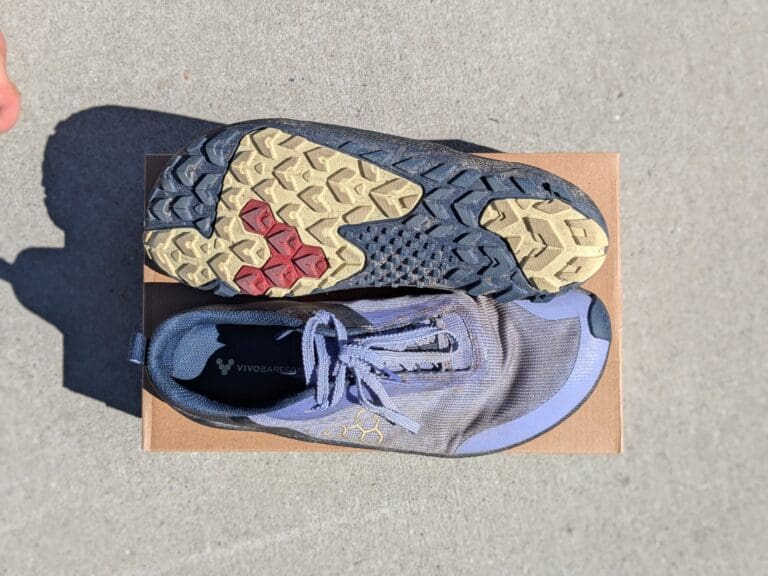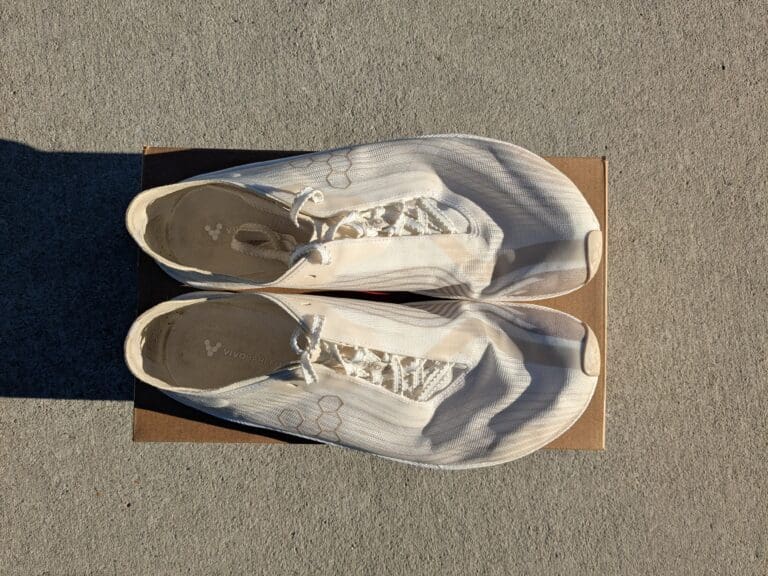The Vivobarefoot Primus Trail FG and the Primus Trail Knit share the same platform but differ in the upper. As you would have guessed, the Knit uses a sock-like material to place the foot onto the sole, whereas the standard version is an interesting hybrid.
So which upper works best? And which of these shoes are the best barefoot trail shoes on the market?
Let’s find out as I compare these two Vivo trail offerings side by side and help you decide which model suits you.
Affiliate Disclosure: By clicking through the links on this page and purchasing the products, you’ll be helping me out. This is done because I receive a kickback from the sellers at no extra cost to you! Thank you so much for supporting us!
Primus Trail FG
Type: Trail
Width: Wide
Stack height: 6.5mm + 3mm removable insole
Weight: 8.9oz / 250g
Protective, aggressive, and still minimal. Read the full Review
Primus Trail Knit FG
Type: Trail
Width: Wide
Stack height: 6.5mm + 3mm removable insole
Weight: 14.1oz / 400g
Super comfortable for trail shoes, but heavy. Good for park runs and hiking. Read the full Review
One of the biggest differences between the two models is the fit.
The standard Primus lite is fitted and is narrower in the midfoot. In contrast, the Knit version is more forgiving in width and depth.
Even though both shoes share the same DNA, the upper material makes all the difference. The standard Primus Trail will be too snug in the midfoot for some. The stiffer-upper is less forgiving, creating a great lockdown, but it may not have enough volume for everyone. The knit, on the other hand, is much more forgiving. So, if you want more volume and room, try the Primus Trail Knit.
Which minimal running shoe is for you?
Take a quick 5-question quiz to identify the perfect minimal running shoe for your feet! You'll get both road and trail options based on your answers!
Do the shoes run true to size?
For the Primus Trail Knit, I’d suggest selecting ½ a size smaller to find the perfect fit. ½ a size isn’t huge; it amounts to around 3.5mm, but it can make a difference with a knit upper. Because of the knit design, you want the upper to be snug because the lacing cannot provide a solid lockdown as it usually does with stiffer uppers.
The Primus Trail runs true to size. Because the upper is less forgiving, I’d suggest buying your true size for an optimized fit around the midfoot. Sticking true to size guarantees a better forefoot fit and toe space.
If you have a high-volume foot, opt for the Knit upper. This will allow the material to expand to the size of your foot. The standard Primus Trail does little to accommodate a deep foot due to the stiffer upper materials. I have a fairly average foot, and it works for me, but try the Knit version if you require more room in your shoe.
Are the toe boxes wide?
I love the squared-off toe box around the big toe. If you have a natural toe splay, your big toe will point forward or even towards your center line. Conventional toe boxes often taper in at the big toe, constricting an optimal big toe motion. Looking down at Vivobarefoot shoes, it’s evident that this is not the case. The toe box is nicely squared off at the big toe.
Vivobarefoot shoes taper aggressively on the little toe. This is where your foot shape comes into it. If you don’t have a large toe splay on the little toe, or it’s turned in like me, the toe box will work fine. But if you have a wide fan-like shape to your toes, you may want to look to another brand like Lems or Softstars.
Generally, these are both minimal shoes using the same 6.5mm outsole. But the upper does create a different barefoot feeling.
The Primus Knit provides an authentic, unobstructed barefoot feel but at the cost of lateral stability, which is vital in a trail shoe. This leads to the Primus Trail being a better shoe for technical rocky trails and the Knit being suited to mellow park runs.
Are the shoes flexible?
The Primus Trail models do the job if you’re looking for ground feel with some protection. There’s only 6.5mm of rubber under your foot! Add the insole (optional) to that, and it’s around 9mm in stack height. Keeping the shoe flexible in every direction you can think of.
The knit upper allows the shoe to flex more than the standard Primus Trail. I noticed a crease point forming at the forefoot when reviewing the standard Primus Trail shoe, which was caused by the stiffer upper materials. However, the Knit material used in this version offers greater flexibility throughout the shoe. For me, this creates a more “natural” barefoot feel.
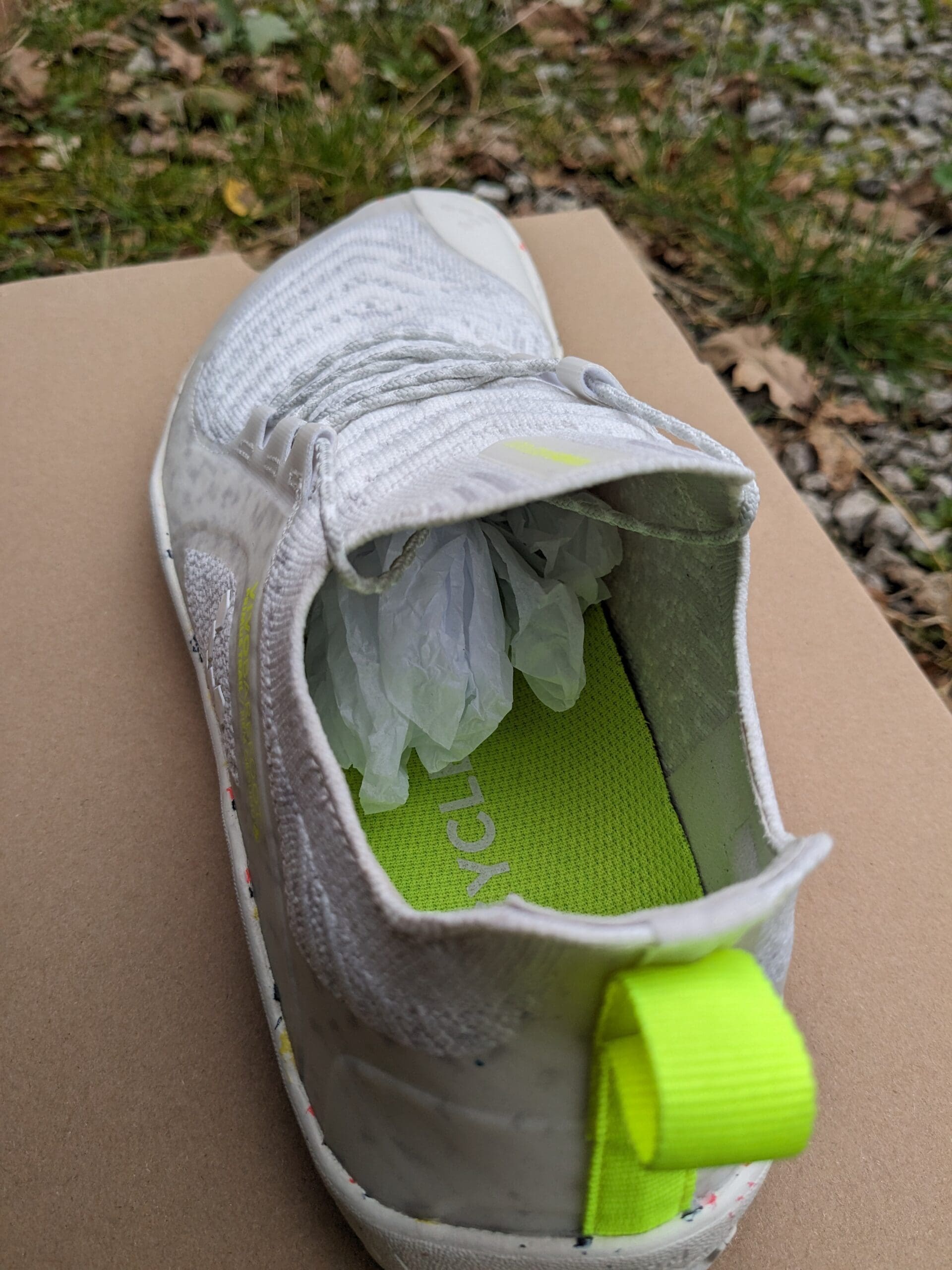
Does the lockdown provide security?
While the knit upper is comfortable, your foot can slip inside the shoe. Laces are one thing, but if the material you’re pulling around your foot is stretchy, you’ll never achieve a secure fit. That’s why I wouldn’t take the Primus Trail Knit on a challenging mountain day.
Is there too much ground feel on rough terrain?
Although minimal, both models offer “enough” protection in many situations. The only time I question the stack height is on technical descents with sharp rocks. There’s little protection, and removing the insole, as I do, gives a ton more ground feel. It could be best to choose an Altra if you’re always on rough terrain.
I am concerned about the Primus Trail Knit upper when mountain running. No matter how hard you try to avoid rocks, you’ll always end up kicking or scuffing one or two. The knit upper offers little to no protection, so if rocky trails are on your list, try the standard Primus Trail instead.
Can I run without the insoles?
Both models have a fully removable insole and drops you an extra 2-3mm closer to the ground. I would love this, but it’s only an option for those with deep feet that fill out the shoe. Rather than being a decision about feel, having the insole in or out is more a decision of fit. Most will find the Knit fits better with the insole, but that seems to be the opposite with the standard Primus Lite.
How heavy are the two models?
The Primus Trail Knit is by far the heavier of the two. Honestly, I’ve not felt a heavier shoe in a long time. So, all that comfort comes at a cost. If weight is a concern, and it likely will be if you’re doing any distance, then I’d stick to the standard Primus Trail.
How long will the outsole last?
If you keep the shoe on the trails, the outsole will likely last up to 1000km. I have this confidence because of my experience with the Primus Trail and the feel of the rubber compound used on the outsole. It’s a reasonably hard rubber, suitable for durability but not always for grip. It’s all just a trade-off.
Can I repair the shoe?
Sadly, Vivobarefoot does not offer repairs on the Primus line. But many of their other casual models can be returned for repairs and sprucing up. However, they do have a recycling program once you’ve finished with the shoes.
Once you can’t repair or don’t need them anymore, send us your old Vivos and we’ll make they sure they’re given a second life, or if they’re really well-loved, we’ll store them until we launch our recycling solution.
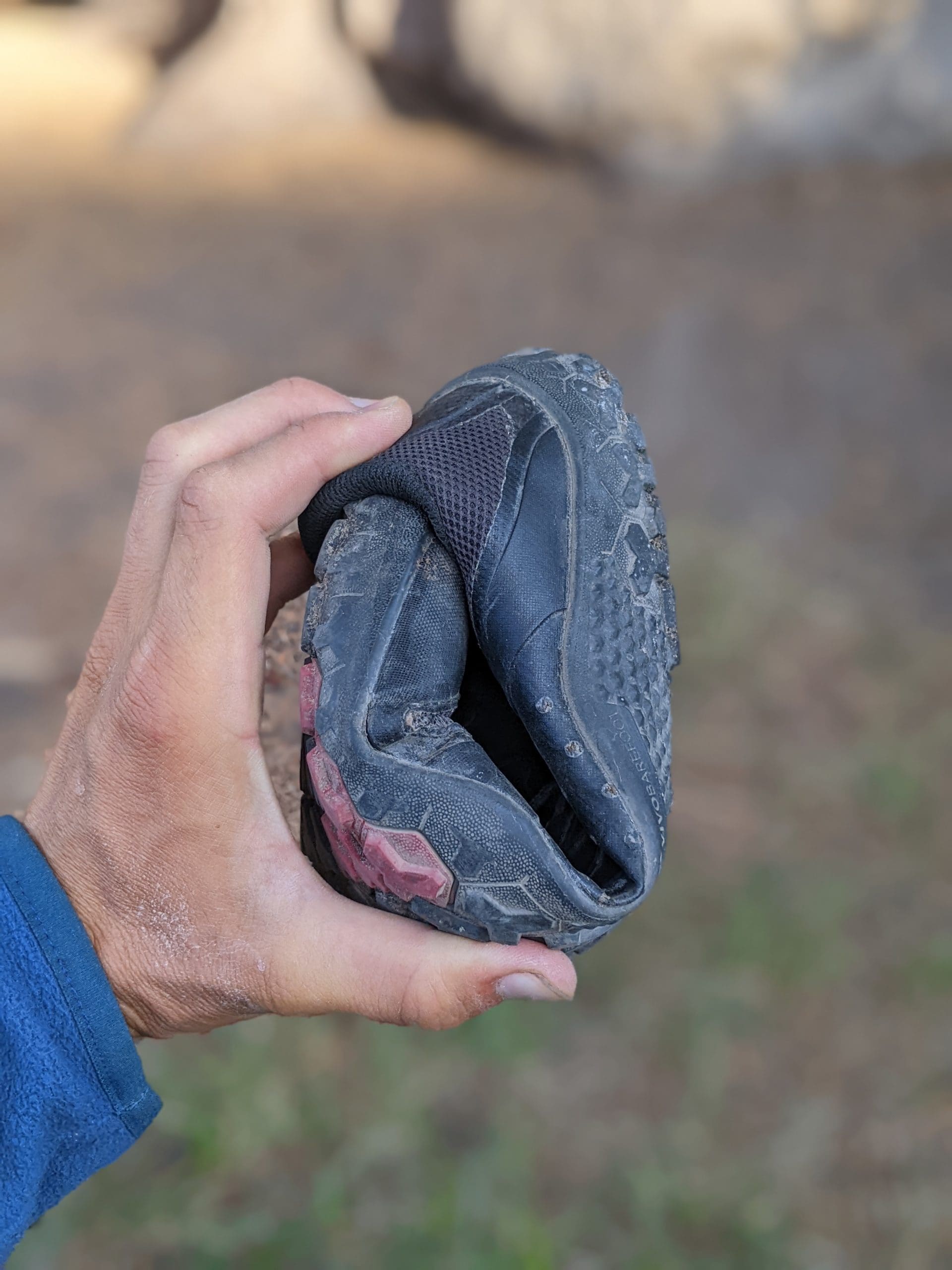
Are Knit uppers durable?
In a word, yes. But I’m skeptical that they should be taking on the trails. Because the upper martial is 100% knit, there’s a chance it could rip. The standard upper, on the other hand, is much more durable and protects from any trail damage.
If you’re only going to do a park run, the Knit upper will be enough. If you’re unlikely to need much protection, the knit upper will work well enough until it starts losing its flex. I’ve seen no indication of when this will happen, but we can take a guess it will happen at some point. If we look at stretchy clothing, we could estimate it’ll be years, and considering the outsole will likely be worn out before this point, I don’t think over-stretching of the upper will be an issue.
Glue problems with the outsole connection
In the past, I’ve seen the outsole become unstuck, particularly around the forefoot bend. The Primus Trail Knit will have an advantage here because less pressure will go through this area, meaning it’s less likely to come unstuck.
Each model comes with trade-offs, depending on what you’re willing to give up.
The main difference comes down to fit and feel.
If you want a deeper shoe, which is more forgiving in width:
- Go with the Vivobarefoot Primus Trail Knit
If you need a durable shoe that performs at longer distances
- Go with the Vivobarefoot Primus Trail
If you’re wanting a casual shoe for hikes and the occasional run
- Go with the Vivobarefoot Primus Trail Knit
If you want a shoe that protects you from the elements but is still barefoot,
- Go with the Vivobarefoot Primus Trail
Primus Trail FG
Type: Trail
Width: Wide
Stack height: 6.5mm + 3mm removable insole
Weight: 8.9oz / 250g
Protective, aggressive, and still minimal. Read the full Review
Primus Trail Knit FG
Type: Trail
Width: Wide
Stack height: 6.5mm + 3mm removable insole
Weight: 14.1oz / 400g
Super comfortable for trail shoes, but heavy. Good for park runs and hiking. Read the full Review
